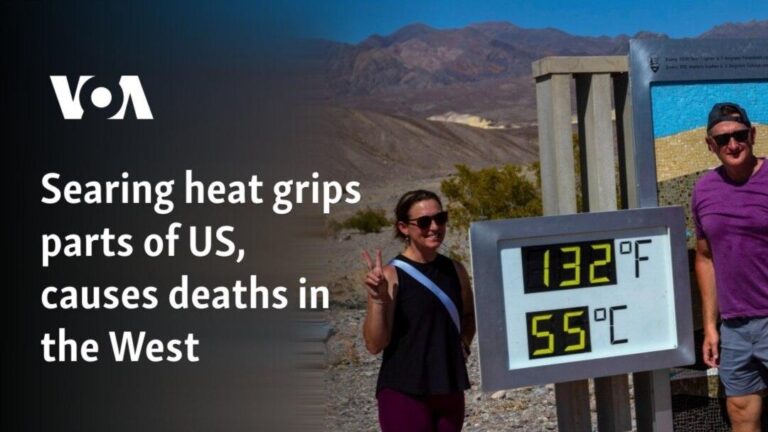Intense Heatwaves Challenge Public Health and Energy Systems Across the U.S.
As soaring temperatures engulf nearly 50% of the United States, concerns about public safety and the resilience of electrical grids have intensified. Cities like Dallas are enduring extreme heat episodes that threaten to overload energy networks and endanger at-risk communities. This persistent heat surge not only tests emergency services but also highlights the escalating difficulties posed by climate volatility nationwide.
Healthcare Systems Under Pressure Amid Rising Heat-Related Illnesses
Healthcare facilities across extensive regions are experiencing a surge in patients suffering from heat-induced conditions such as heat exhaustion and heatstroke. Vulnerable demographicsŌĆöincluding seniors, young children, and individuals with chronic health issuesŌĆöare disproportionately affected. Public health agencies have issued urgent advisories stressing the importance of staying hydrated, utilizing cooling centers, and seeking prompt medical care to reduce mortality rates. Additionally, elevated temperatures worsen existing health problems, making timely medical attention more crucial than ever.
Simultaneously, the strain on power infrastructure intensifies as millions increase air conditioner usage to cope with the heat. Grid operators caution that sustained high electricity consumption could trigger rolling blackouts, complicating healthcare delivery and jeopardizing those dependent on electrically powered medical equipment. The complex interaction between extreme heat and stressed energy systems creates a precarious environment, particularly in:
- Rural areas: Limited medical resources struggle to meet sudden patient influxes.
- Urban heat islands: Elevated nighttime temperatures reduce natural cooling, heightening health risks.
- Power disruptions: Interruptions can compromise medication storage and emergency response capabilities.
| Region | Average Daily Heat-Related ER Visits | Grid Stress Level |
|---|---|---|
| Southwest | 160+ | Critical |
| Midwest | 95 | Elevated |
| South | 130 | Critical |
Energy Grids Struggle to Meet Unprecedented Demand Amid Blackouts
The ongoing heatwave has pushed power grids to their operational limits, as widespread use of cooling systems drives electricity consumption to record highs. Utility companies report that this surge has resulted in rolling blackouts across several states, disrupting daily routines and posing serious health risks, especially for individuals reliant on continuous power for cooling and medical devices.
Contributing factors include aging infrastructure and unexpected demand spikes. To mitigate failures, energy providers have implemented several strategies:
- Issuing public appeals for voluntary energy conservation
- Activating advanced load management to prevent total outages
- Deploying mobile substations and rapid repair teams to critical areas
| State | Peak Electricity Demand (MW) | Blackout Status |
|---|---|---|
| Texas | 70,500 | Active |
| California | 49,200 | Active |
| Arizona | 27,000 | Intermittent |
Authorities Call for Swift Infrastructure Enhancements to Boost Grid Reliability
Government and utility leaders stress the critical need to strengthen electrical grids and public infrastructure as extreme heatwaves impact nearly half the country. The combination of soaring temperatures and increased energy consumption threatens both public health and grid stability. Collaborative efforts between utilities and government agencies focus on rapid implementation of measures such as grid modernization, improved emergency response protocols, and increased resource deployment to minimize outages during peak heat periods.
Highlighted initiatives include:
- Integration of smart grid technologies for real-time system monitoring and swift intervention
- Investment in durable energy infrastructure designed to withstand prolonged heat stress
- Public campaigns encouraging energy-saving behaviors during critical hours
- Enhanced coordination among agencies to streamline emergency response efforts
| Focus Area | Allocated Funding | Projected Outcome |
|---|---|---|
| Grid Modernization | $3.5 Billion | Decrease outages by 45% |
| Cooling Facility Expansion | $500 Million | Provide relief to 6 Million residents |
| Community Outreach | $120 Million | Boost energy conservation compliance by 35% |
Expanding Cooling Centers and Public Education as Vital Heatwave Mitigation Strategies
Experts advocate for a substantial increase in cooling center availability to offer safe havens for vulnerable groups, including the elderly, children, and those with chronic illnesses. Recommendations emphasize extending operational hours and strategically situating centers near public transportation and underserved communities to maximize accessibility during extreme heat events.
Complementing infrastructure growth, authorities urge comprehensive public education campaigns to raise awareness about heat safety and promote energy conservation during peak demand periods. Proposed measures include:
- Citywide heat alerts via SMS and social media channels
- Distribution of multilingual heat safety materials
- Workshops on identifying heat-related symptoms and administering first aid
- Partnerships with community organizations to reach high-risk populations
| Strategy | Objective | Anticipated Benefit |
|---|---|---|
| Cooling Center Expansion | Enhance access to cooling resources | Lower heat-related health incidents by 35% |
| Public Awareness Initiatives | Educate on heat safety and energy use | Improve community readiness and response |
| Multilingual Outreach | Ensure inclusivity across diverse populations | Strengthen communication and engagement |
Conclusion: Prioritizing Resilience Amid Escalating Heat Challenges
With nearly half the nation enduring extreme heat, the intertwined threats to public health and energy infrastructure underscore the urgent need for proactive measures. Strengthening preparedness and resilience is essential to protect vulnerable populations and maintain critical services. The convergence of climate change impacts and rising energy demands calls for comprehensive strategies addressing both immediate crises and long-term sustainability. Continuous monitoring and adaptive responses will be vital to mitigating the societal and economic consequences of future heatwaves.







